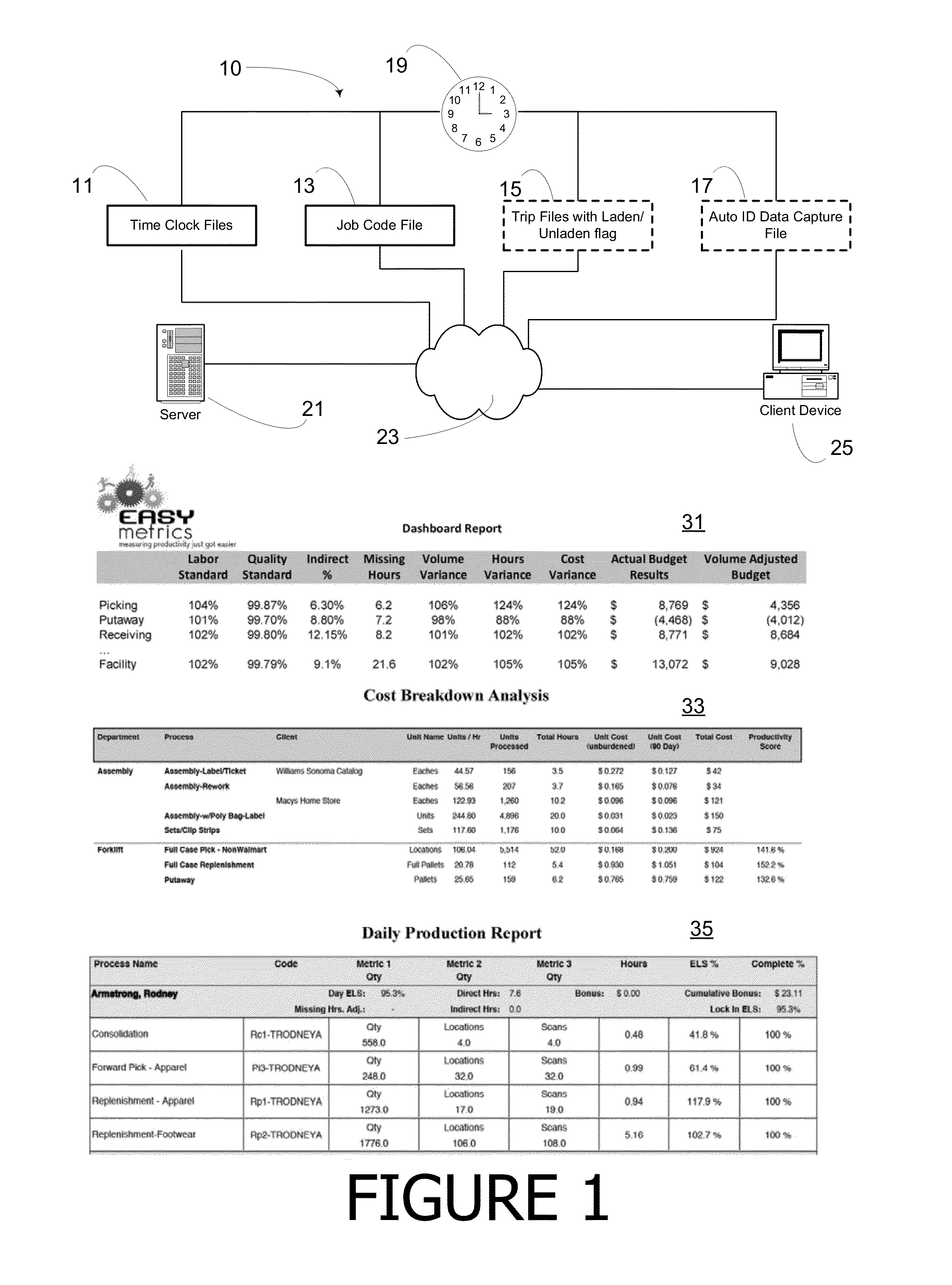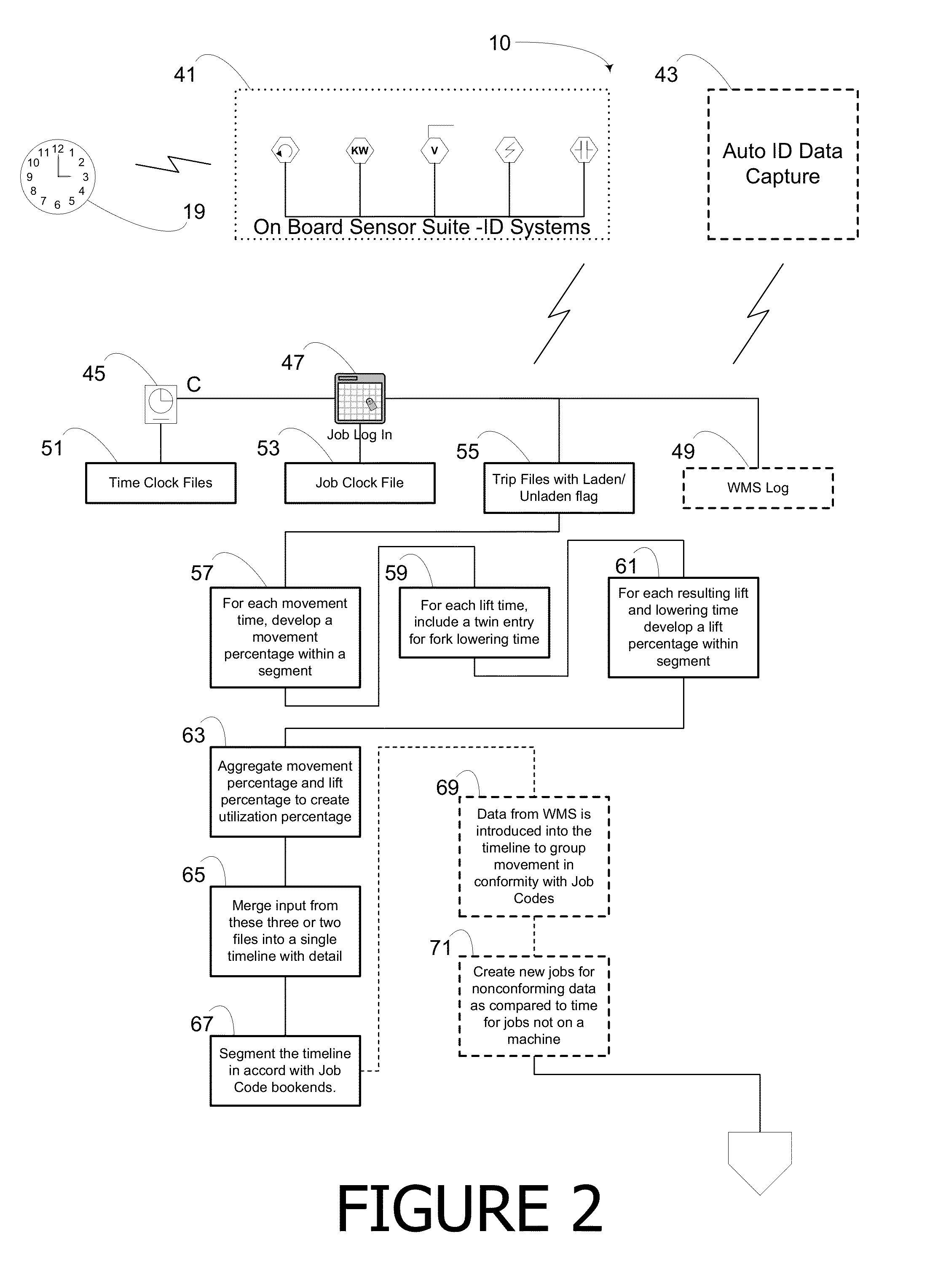Method and system for deriving productivity metrics from vehicle use
a technology of productivity metrics and vehicle use, applied in the field of methods and systems for deriving productivity metrics from vehicle use, can solve the problems of increasing the complexity of the problem geometrically, increasing the price of warehousing goods, and the ability of a human manager to suitably stage the warehouse, so as to achieve the effect of rewarding productivity and reducing lift time within a segmen
- Summary
- Abstract
- Description
- Claims
- Application Information
AI Technical Summary
Benefits of technology
Problems solved by technology
Method used
Image
Examples
Embodiment Construction
[0028]Warehouse management systems (WMS) lend insight into the actual location of goods within a warehouse but are not generally useful as tools for making efficient movement through the warehouse. Because locations of goods are static in most WMS, using WMS to increase efficiency in warehouse operation can only be achieved by using other systems to place the most needed goods on the shortest paths through the warehouse. To achieve any efficiency, then, an operator of a vehicle strives to select paths that place trip onset times and trip conclusion times such that they are separated by the shortest possible intervals when lift vehicles are operated at regular speeds. Thus, to minimize these intervals, conventional practices for warehouse management include creating a catalogue or mapping of shortest paths for most frequently ordered goods within a warehouse. To develop the catalogue or mapping, the conventional solution requires an elaborate calculation of shortest paths for the mos...
PUM
 Login to View More
Login to View More Abstract
Description
Claims
Application Information
 Login to View More
Login to View More - R&D
- Intellectual Property
- Life Sciences
- Materials
- Tech Scout
- Unparalleled Data Quality
- Higher Quality Content
- 60% Fewer Hallucinations
Browse by: Latest US Patents, China's latest patents, Technical Efficacy Thesaurus, Application Domain, Technology Topic, Popular Technical Reports.
© 2025 PatSnap. All rights reserved.Legal|Privacy policy|Modern Slavery Act Transparency Statement|Sitemap|About US| Contact US: help@patsnap.com



